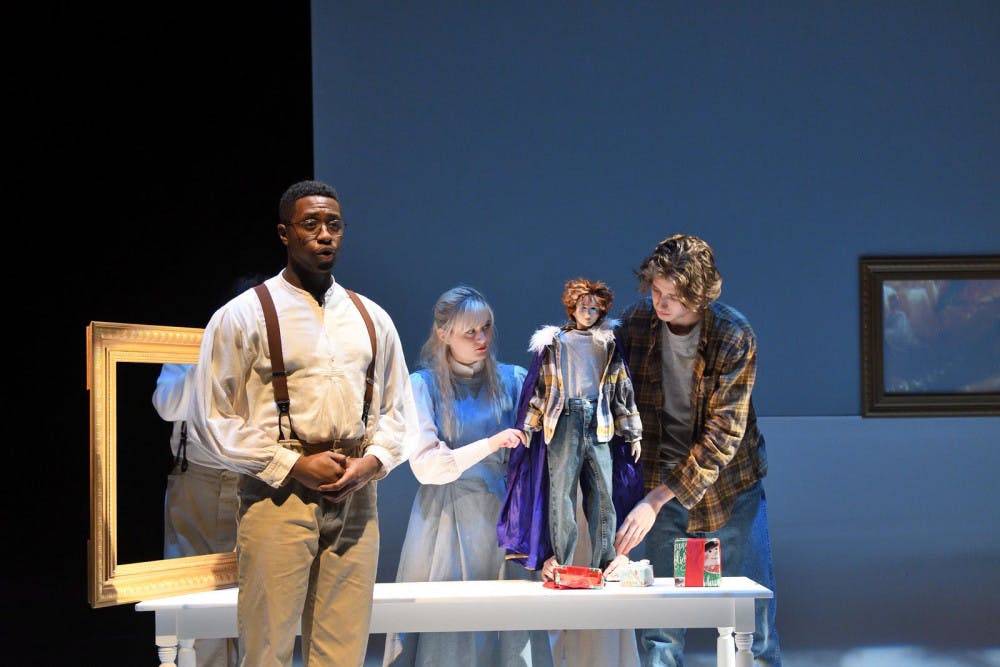Thomas Cole’s “The Course of Empire” is a series of five paintings from the 1830s that depicts the rise, peak and eventual destruction of civilization. There is an anxiety underneath the art — a fear of the negative consequences of empire’s excess coupled with a nostalgic longing for a pastoral past.
Nearly two centuries later and an ocean away, Cole’s paintings have inspired director Dan Hurlin to create Sock & Buskin’s latest production, “ERRATICS: Scenes from Thomas Cole’s The Course of Empire.” The show loosely followed the same pattern of “The Course of Empire,” artfully interweaving live performance with puppetry, visual effects and musical numbers to grapple with the development and decadence of civilization. Peppered with hints of a tumultuous family structure and a star-crossed romance between a dog and a deer during the apocalypse, the production muses on the destructive effects of time and human folly.
Though the complex nature of the performance’s thematic skeleton left audiences scratching their heads, a logical structure was not necessarily the production’s objective. Instead, the piece performed itself like a dance, sensational perhaps for its absence of apparent order — but not without technique.
“ERRATICS” was defined by its use of bunraku, a traditional Japanese style of puppetry with a chanter, a shamisen player and three puppeteers who operate the head, face and appendages of large, lifelike puppets. Hurlin, known for his puppeteering, trained the cast extensively in the physically demanding art form. The puppets were modeled on some of the actors, mirroring their physical appearances and costumes. Though bunraku artists are traditionally dressed in hooded black robes, the cast of “ERRATICS” mainly doned white and bright blue, blurring the line between the world of puppets and the world of human actors throughout the play.
The show also stunned audiences with a remote control piano on the stage. The play began with a cacophonous eruption; the piano keys wriggled rapidly, projected onto a screen with no pianist in sight.
“ERRATICS” achieved a true theatrical experience: By stripping away the burden of a readable plot, the play was able to synthesize an aura that was mystical and grounded in harsh reality, tragic and comedic, off-putting and enrapturing. To echo the sentiments of the audience, “ERRATICS” may be “nonsense,” but it is an effective nonsensicalness rooted in movement, feeling and artistic inspiration.





